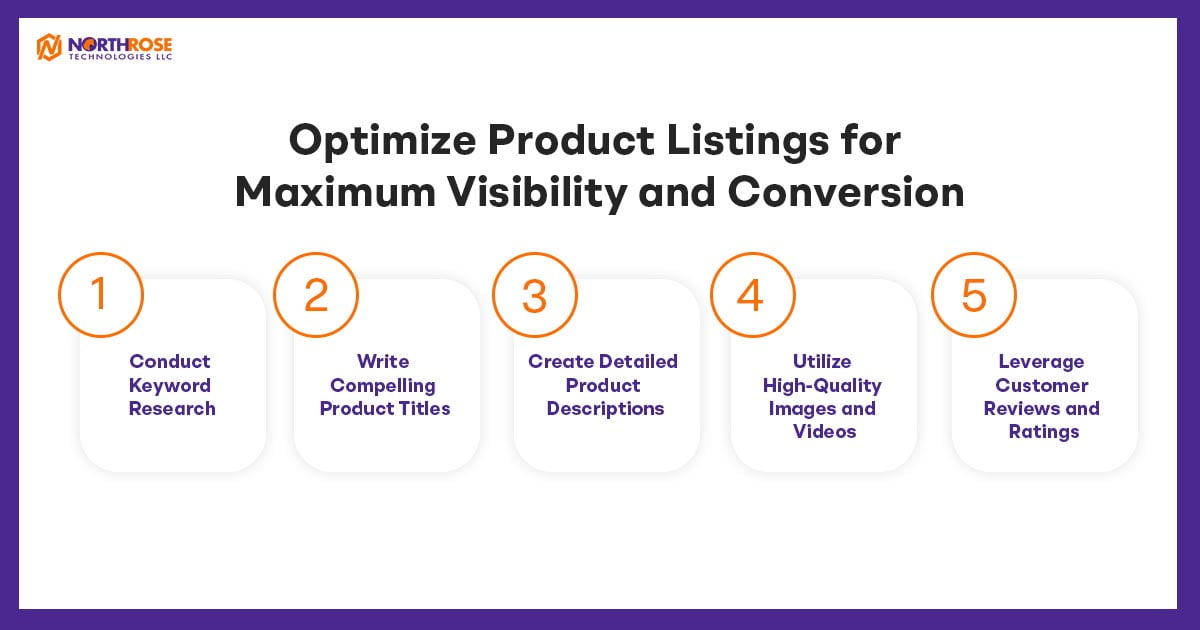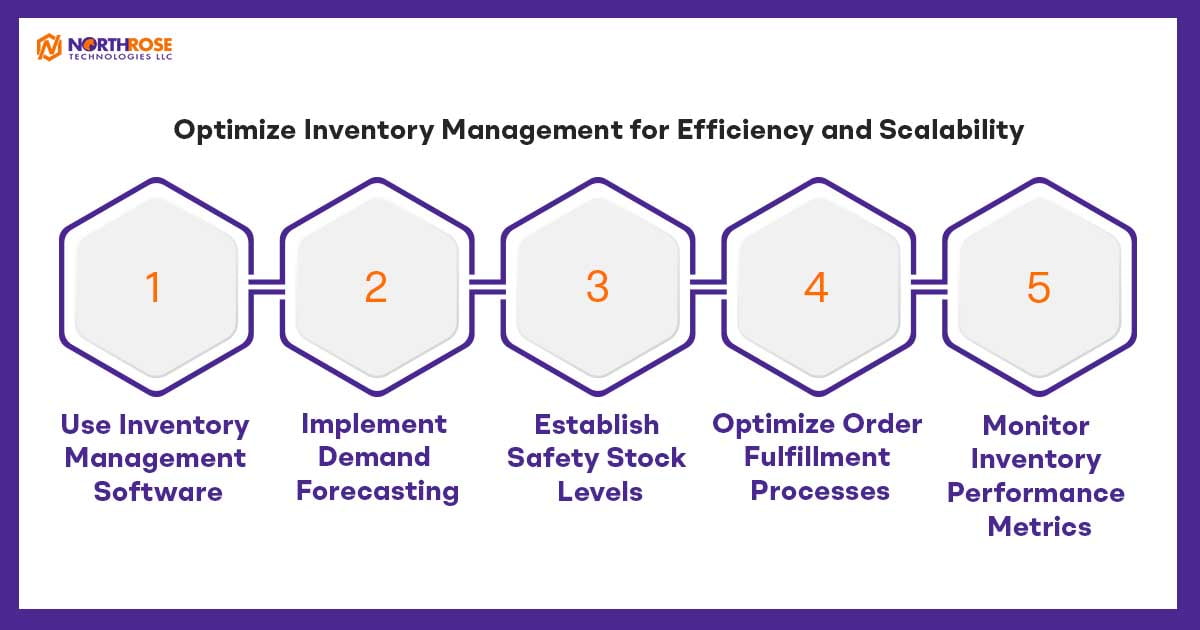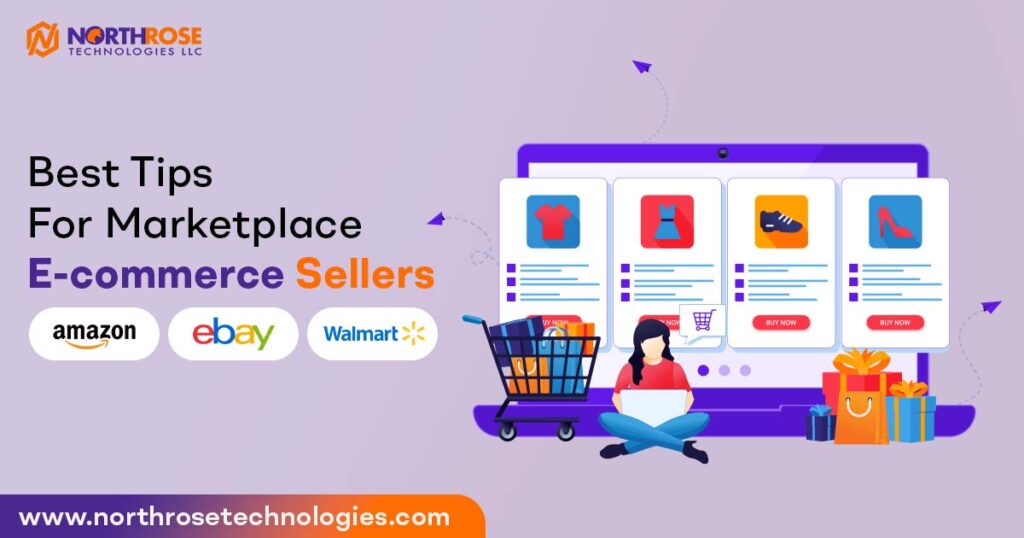E-commerce marketplaces have emerged as a major force in the retail business. Sellers now have unparalleled opportunities to reach a global audience through online conglomerates such as Amazon, eBay, and Walmart.
However, success in the competitive world of marketplace e-commerce entails more than simply listing things and hoping for the best.
To succeed and stand out from the crowd, sellers must employ techniques and best practices suited to the specific dynamics of online marketplaces.
Optimize Product Listings for Maximum Visibility and Conversion
In the vast sea of online products, visibility is key to attracting potential customers. Optimizing product listings is crucial for increasing visibility within marketplace search results and driving conversions. Here are some best practices for optimizing product listings:

1. Conduct Keyword Research:
Determine relevant keywords that potential buyers are likely to use while looking for products like yours. Use keyword research tools like Google Keyword Planner, SEMrush, and Ahrefs to find high-volume keywords with moderate competition.
2. Write Compelling Product Titles:
Develop succinct and descriptive product titles that integrate relevant keywords and emphasize crucial features or benefits. Make sure the titles are clear, informative, and easy to read. Avoid keyword stuffing and excessive punctuation, which might detract from the user experience.
3. Create Detailed Product Descriptions:
Provide detailed product descriptions that address client concerns, highlight unique selling qualities, and answer frequently asked questions. To make features and specs easier to read, use bullet points. To increase search visibility, use essential keywords naturally throughout the description.
4. Utilize High-Quality Images and Videos:
Visual material is vital in grabbing the attention of online shoppers. Use high-resolution photographs and videos to show off products from various angles and give a clear portrayal of size, color, and texture. Optimize photos for faster loading times and maintain consistent image quality across all product listings.
5. Leverage Customer Reviews and Ratings:
Encourage satisfied customers to provide positive feedback and ratings for your items. Displaying social proof signals like star ratings and customer testimonials can build trust and confidence in potential purchasers. Respond quickly to consumer comments and answer any bad reviews to show your dedication to customer happiness.
Implement Competitive Pricing Strategies to Stay Ahead of the Competition
Pricing is critical in influencing purchasing decisions and competing effectively in the marketplace. Implementing competitive pricing strategies can help sellers attract price-sensitive customers while maximizing profitability.
Here are some effective pricing strategies for marketplace e-commerce sellers:
1. Monitor Competitor Pricing:
To remain competitive, keep an eye on competition pricing patterns and alter your prices as needed. Price tracking tools can help you analyze price changes across numerous competitors and detect pricing opportunities or threats.
2. Set Dynamic Pricing Rules:
Establish dynamic pricing rules depending on competitor prices, demand variations, seasonality, and inventory levels. Automated repricing technologies, such as RepricerExpress or SellerActive, can assist sellers in modifying prices in real time to improve competitiveness and increase sales margins.
3. Offer Discounts and Promotions:
Use discounts, coupons, and promotional offers to attract customers and increase sales. Experiment with limited-time specials, bundle offers, and flash sales to instill urgency and drive spontaneous purchases. Use marketplace offerings such as Amazon Lightning Deals or eBay Daily Deals to reach a larger audience and gain visibility.
4. Provide Value-Added Services:
Differentiate your offers by giving value-added services such as free shipping, longer warranties, and complimentary services. Highlight these additional benefits in product listings to justify higher prices and attract customers looking for more value than the product itself.
5. Monitor Price Elasticity and Profitability:
Analyse price and demand elasticity measures to determine the impact of price changes on sales volume and profitability. Adjust pricing strategies based on performance data to achieve the best balance of sales volume and profit margins. Regularly assess pricing plans to adjust to market conditions and remain competitive over time.
Enhance Customer Experience
In the highly competitive world of e-commerce, delivering exceptional customer experiences is essential for building brand loyalty and fostering long-term relationships with customers.
By prioritizing customer satisfaction and optimizing every touchpoint of the purchasing journey, sellers can differentiate themselves from competitors and drive repeat purchases. Here are some strategies to enhance the customer experience on marketplace platforms:
1. Provide Seamless Omnichannel Experience:
Ensure consistency throughout all client touchpoints, including product discovery, purchase process, post-purchase support, and returns administration. Optimize product listings for mobile devices and use responsive design principles to provide a consistent shopping experience across all devices and channels.
2. Offer Personalized Recommendations:
Use client data and browsing history to deliver personalized product suggestions based on individual interests and purchasing behaviors. Use recommendation algorithms or AI-powered product discovery tools to identify relevant products and increase cross-selling and upsell opportunities.
3. Streamline Checkout Process:
Reduce cart abandonment and enhance conversion rates by simplifying the checkout process and minimizing friction spots. Implement guest checkout options, accept different payment ways, and optimize form fields for rapid and easy completion. Provide explicit shipping charges and delivery estimates upfront to avoid surprises at checkout.
4. Provide Prompt and Responsive Customer Support:
Provide quick and attentive customer service over several channels, such as live chat, email, and phone. Provide customer support staff with the necessary training and tools to resolve inquiries and issues rapidly. Use automation tools to streamline customer support and give clients 24/7 assistance.
5. Solicit Feedback and Actively Listen to Customers:
Encourage clients to submit feedback via post-purchase surveys, product evaluations, and social media interactions. Actively listen to customer feedback and adopt suggestions to improve their purchasing experience. Showcase honesty and authenticity by openly addressing consumer complaints and proactively pursuing solutions to problems.
Optimize Inventory Management for Efficiency and Scalability

1. Use Inventory Management Software:
Invest in inventory management software or ecommerce platforms with built-in inventory management features to track stock levels, manage SKUs, and automate inventory replenishment. Choose a solution that integrates seamlessly with your marketplace accounts and other business systems to ensure accurate inventory synchronization across channels.
2. Implement Demand Forecasting:
Utilize historical sales data, market trends, and seasonality patterns to forecast demand and anticipate future inventory requirements. Implement demand forecasting algorithms or predictive analytics tools to optimize inventory levels and prevent stockouts or overstock situations. Adjust inventory replenishment strategies based on demand forecasts to minimize carrying costs and maximize sales opportunities.
3. Establish Safety Stock Levels:
Maintain safety stock levels to buffer against unforeseen fluctuations in demand, supplier delays, or unexpected disruptions in the supply chain. Calculate safety stock based on lead times, demand variability, and service level targets to ensure adequate inventory availability while minimizing excess inventory holding costs.
4. Optimize Order Fulfillment Processes:
Streamline order fulfillment processes to reduce lead times, improve order accuracy, and enhance customer satisfaction. Implement efficient picking, packing, and shipping workflows using barcode scanning technology, batch processing, and order prioritization algorithms. Utilize third-party logistics (3PL) providers or fulfillment centers to outsource warehousing and fulfillment operations and scale more cost-effectively.
5. Monitor Inventory Performance Metrics:
Track key inventory performance metrics such as sell-through rate, inventory turnover, days of inventory on hand, and stockout rate to assess the health of your inventory management practices. Analyze performance data regularly and identify areas for improvement or optimization to enhance efficiency and profitability. Leverage inventory analytics tools or dashboards to visualize performance metrics and make data-driven decisions.
Navigating the complexities of marketplace e-commerce requires a strategic approach and a commitment to continuous improvement.
By staying informed, adapting to changing market dynamics, and leveraging data-driven insights, marketplace sellers can position themselves for long-term success and thrive in an increasingly competitive digital marketplace ecosystem.
Connect with North Rose Technologies to learn more.




